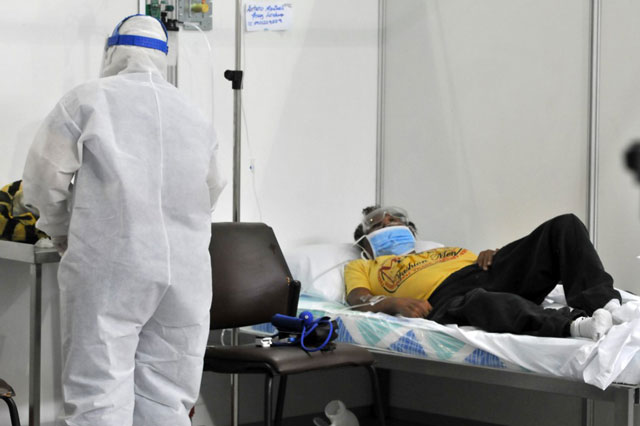
Kampala, Uganda | THE INDEPENDENT | Majority of the people that have tested positive for COVID-19 in Uganda did not present any of the common symptoms associated with COVID-19. The symptoms associated with COVID-19 include fever, flu, cough, general body weakness and difficulty in breathing.
Last month, the US Centers for Disease Control and Prevention added six other new symptoms which include chills, repeated shaking with chills, muscle pain, headache, sore throat and loss of taste or smell to the list of common symptoms seen among patients suffering from COVID-19.
But data from the Ministry of Health shows that 57.4 percent of the treated patients did not present any of the symptoms mentioned. It further shows that of those that presented symptoms, 43 percent had cough while 37 percent presented with fever and chest pain.
Dr Misaki Wayengera, the head of the COVID-19 Scientific Committee says the reason why many patients do not have symptoms is being investigated. “We are still investigating why this might be but one reason is that majority of our confirmed cases are below the age of 50 and as such do not present with severe symptoms of the disease,” he said.
However, Prof Pauline Byakika a member of the Scientific Committee says that some of the asymptomatic patients developed symptoms along the way. She adds that the lack or presence of symptoms did not change the way they reacted treatment.
Prof Byakika says that even people with pre-existing conditions did not show symptoms of the disease.
“Few people showed symptoms even among those who have such conditions but they all recovered well,” she said.
A total of 160 cases of COVID-19 have been confirmed in Uganda. Of these 63 have recovered. 22 percent of those that recovered had pre-existing conditions. The most common of which was hypertension.
A study carried out by scientists at Princeton University and published in the Science journal ‘Proceedings of the National Assembly of Science shows silent or asymptomatic infections that cannot be identified clinically can spread the virus to many unsuspecting people. On average, one person can spread the disease to as many as 90 people.
Since majority of patients do not present symptoms, Dr David Musoke, a public health expert on infection control and prevention says that it is important for people to wear masks in public.
“The main purpose of putting on masks is to stop the spread of the disease to persons who might not be wearing masks like those with respiratory illnesses like asthma and children. When an asymptomatic does not cough in their elbows, they can spread the disease,” Dr Musoke said.
******
URN
 The Independent Uganda: You get the Truth we Pay the Price
The Independent Uganda: You get the Truth we Pay the Price



